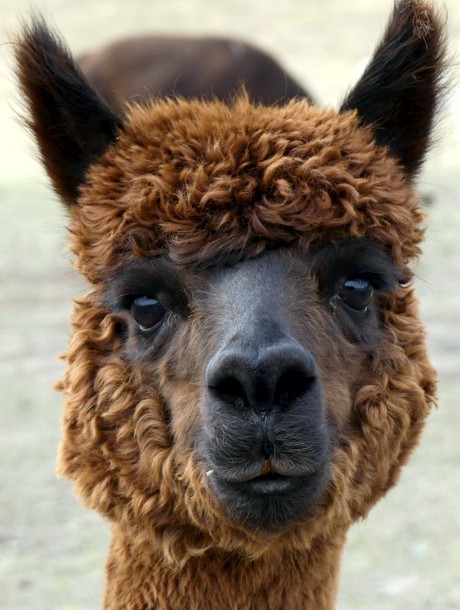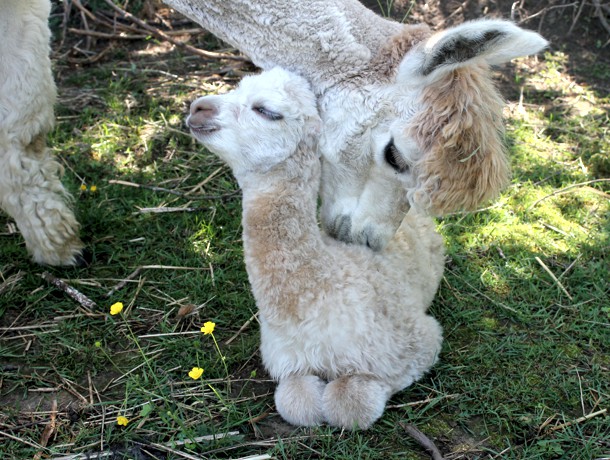About the CLAA
The Canadian Llama and Alpaca Association (CLAA) was first incorporated under the Animal Pedigree Act of Canada in January of 1989 as the Canadian Lama Association. Work forming the association actually began in 1987 through the efforts of founding members and the first Board of Directors: Coral Gibson, Jacques Grenier, Richard Krieger, Lars Dahl and Karin Buhrmann.
The primary objective of the Association was, and still is to develop, identify and register new world camelids in Canada. Although "lama" is the accepted plural of llamas, alpacas, guanacos and vicunas, the association's name was changed to its present version in December of 1996 to more accurately reflect the two main breeds being registered – alpacas and llamas.
Registration of our Foundation Stock began in 1990 and closed December 31, 2000. The first animals registered were Toranago CL, a male llama, and FS Miski CA, a female alpaca. There were 531 llamas and 16 alpacas registered that year. At the end of 2006 we had 18,376 registered alpacas and 14,502 registered llamas.
We currently have three categories of registration of llamas and alpacas:
Foundation stock – llamas and alpacas with no registered parents but who were imported into Canada prior to registry closure, forming the foundation of our current herd.
Purebreds – animals born to two CLAA registered parents of the same breed. We have different certificates of registration for llamas and alpacas.
As of February 2015, the CLAA will also accept foreign registered alpacas as purebreds, provided they meet certain rules of eligibility.
Percentage Purebred – offspring or descendants of a CLAA registered parent bred to a 0% animal of the same breed (see below). These animals also have different coloured certificates of registration to indicate their percentage level.
We also have one level of recordation (recorded by the Association but not registered)
0% – animals that have two parents of the same breed that are not registered with the CLAA. These animals are ineligible for registration and are not issued a certificate. They can however, be bred to CLAA Foundation Stock or CLAA Purebred animals and their resultant offspring are eligible to be registered as percentage purebreds.
Effective September 7th, 2005 the Canadian Llama and Alpaca Association was restructured. Some of the prior responsibilities of the CLAA were delegated to two separate, but related organizations. The two new "breed divisions" are incorporated under Corporations Canada and are officially recognized by the CLAA as the only organizations legally able to have input into the affairs of the CLAA and its revenue.
The Canadian Llama and Alpaca Association
The CLAA's primary objective now lies solely with registry matters – the registering of llama and alpaca pedigrees; maintaining records; transfers of ownerships; breed improvement programs and all things necessary to carry out the function of an animal pedigree association under the Animal Pedigree Act. The respective breed divisions – Alpaca Canada and Llama Canada - will now manage all other industry-related activities, formerly undertaken by the CLAA.
The CLAA will work with each breed division on registry matters and will support and co-operate with each breed division to further the purposes of the CLAA and the breed divisions.
Membership
An individual, partnership or business must own at least one registered llama or one registered alpaca to be a member of the CLAA.
- Membership in the CLAA will include membership in at least one breed organization and the members will be defined as an "alpaca member" or a "llama member".
- Breeders that own both llamas and alpacas may choose which breed organization they prefer to join or may have the option of joining both.
- This choice will determine which breed issues they will be able to vote on.
- The CLAA base fee will be the same for all members, but will also include the membership fee for the member's chosen breed division.
- Each breed organization will set their own membership fee
The CLAA member (or the representative) must be 18 years of age or older.
Board of Directors
The Board will consist of three alpaca members and three llama members.
- All Directors are elected by members of the CLAA;
- Two members from each breed will be elected directly and an additional one appointed from each breed division board, but also elected by members of the CLAA within the breed division.
- The elected Directors will serve three-year terms.
- The appointed directors will serve one-year terms.
Voting
Any question pertaining to both alpaca members and llama members may be voted on by all the members of the CLAA.
Any question pertaining solely to llama members may only be voted on by the llama members of the Association.
Any question pertaining solely to alpaca members may only be voted on by the alpaca members of the Association.
Rules of Eligibility
Every member registering Llamas with the CLAA will comply with the obligations set out in Schedule A of the bylaws.
Every member registering Alpacas with the CLAA will comply with the obligations set out in Schedule B of the bylaws.

In This Section
Translate Page:

